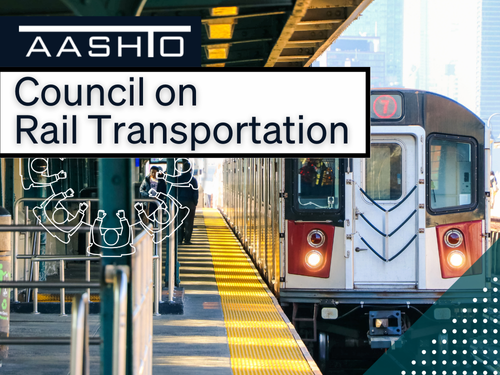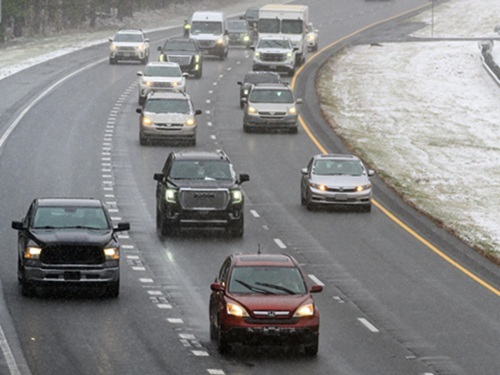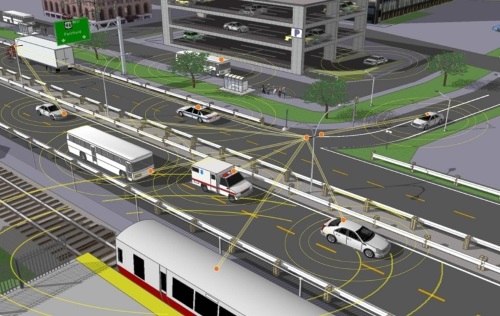The National Telecommunications and Information Administration (NTIA) encouraged the Federal Communications Commission in a September 8 letter to “expand commercial use” of the 5.9 gigahertz (GHz) wireless communication spectrum band: allowing the 5.9 GHz spectrum to be opened to non-transportation use.
[Above graphic via NHTSA.]
In its letter, NTIA supported the FCC’s proposed rulemaking – issued in 2019 – to open up the lower 45 megahertz of the 5.9 GHz band for unlicensed uses like Wi-Fi, while dedicating the remaining 30 megahertz of the band for use by transportation and vehicle safety-related communication services.

The U.S. Department of Transportation and many other organizations – including the American Association of State Highway and Transportation Officials – oppose the FCC’s proposal to open up the 5.9 GHZ spectrum band, calling it “wrong and misguided” as it would “put future safety and mobility improvements” at risk.
Yet a recent news story stated that NTIA’s recent letter outlining how the FCC’s proposal can accommodate other federal users, though largely radar-based operations, in the 5.9 GHz band may represent a “softening” of intra-governmental opposition to opening up the spectrum to non-transportation use.

However, AASHTO remains opposed to the FCC’s move – noting in a letter to Mark Meadows, White House chief of staff, that reallocating spectrum away from transportation safety usage “undermines” efforts to reduce traffic fatalities and injuries, improve overall motor vehicle safety, and reduce traffic congestion.
That reallocation “would also harm U.S. global competitiveness with respect to next-generation automotive safety technologies,” AASHTO and 40 other signatories explained in the White House letter.
It went on to note that vehicle-to-everything or V2X technologies using that spectrum could eliminate or mitigate the severity of up to 80 percent of non-impaired motor vehicle crashes and 70 percent of crashes involving commercial trucks: saving lives, eliminating injuries, and reducing the $800 billion in annual costs associated with crashes on American roads.
 Nation
Nation
Registration Open for AASHTO’s Winter Rail Meeting
December 19, 2025 Nation
Nation

